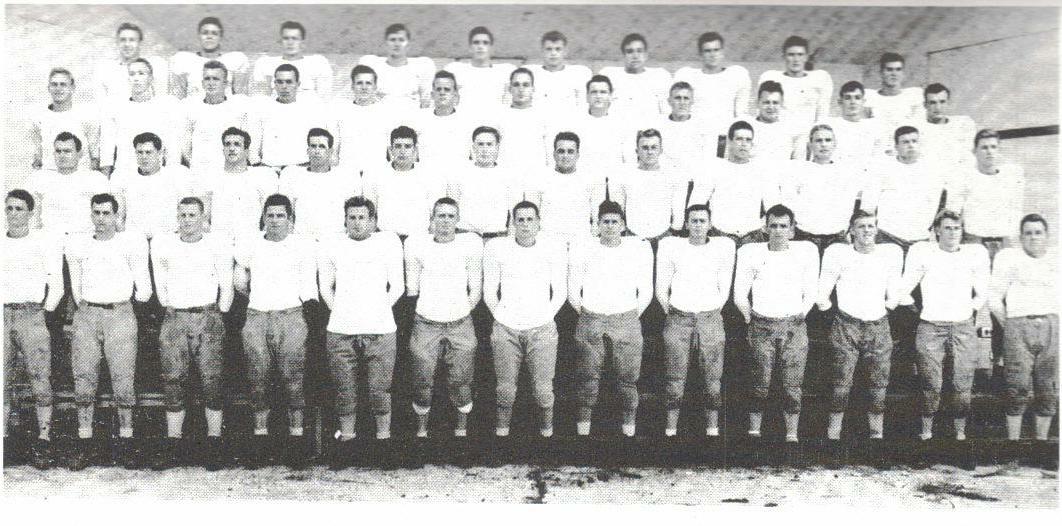FSU’s past, present and future are bound by living fabric of history
By Charlie Barnes, Executive Director - Seminole Boosters
Tallahassee is a city of seven hills. The mostprominent of these are occupied by vigorous cultures of government and education that have defined the city since its founding. Antebellum Tallahassee was home to the newly minted state Capitol as well as the Seminary West of the Suwannee.
In the spring of 1865, young boys in gray uniforms marched south from their West Florida Seminary, down dirt roads toward a place where the St.Marks River plunges underground. At this natural bridge, the boys positioned their rifles atop breastworks and waited for the invaders: blue-coated Yankees coming up the river on barges,determined to take Florida’s Capitol for their prize.
These brave boys who saved the Capitol were men in their 50s when Florida State College won the State Football Championship in 1904. They stood behind the students and along the sidelines, smiling and remembering their days as military cadets at the Seminary. Once, they had defended the Capitol and kept it from falling. Now, they were simply loyal university alumni and fans.
 1902 Football Team - Click to enlarge |
 1903 Football Team - Click to enlarge |
 1904 Football Team - Click to enlarge |
Florida State College had played three seasons of intercollegiate football — in 1902, ’03 and ’04. Forty-three years passed before Florida State played football again. At the end of World War II, the state universities in Tallahassee and Gainesville both became coeducational, and on Oct. 18, 1947, the new age of Florida State University football began.
 1947 Football Team - Click to enlarge |
 Ed Williamson and Jack Haskin |
Enthusiasm was high for the opener against Stetson. Early in the game, Ken MacLean plucked the football out of the air and tucked it away, and gave no thought to what he had done except that he had gained yards and that Florida State was rolling. What MacLean did was catch the first pass in Seminole football history. The first touchdown came later in the second quarter when quarterback Don Grant lofted a soft pass into the right corner of the end zone to end Charlie McMillan. The first half ended, sending a stunned Stetson University team to the locker room trailing 6-0.
“That summer of 1947, most of us spent our time at The Mecca and The Sweet Shoppe, just playing cards and pinball,” MacLean recalls. “One day somebody said, ‘Let’s see if we can get up a football team.’”
MacLean and four others approached Dr. Howard Danforth, the director of Physical Education and Recreation.
“I don’t think anyone realized that we could get a teamso soon,” MacLean said.
Ed Williamson volunteered to be the coach and gymnastics coach Jack Haskin volunteered to assist. Haskin is better known as the founder of the Flying High Circus, which he created that same year. The Haskin Circus Complex bears his name.
The coaches cobbled together an abbreviated schedule that included Stetson, Cumberland, Tennessee Tech, Troy State and Jacksonville State. The coaches received no pay and there were no scholarships for the players.
“Well,” says MacLean, “I think we did get an extra carton of milk in the cafeteria line…”
Cheerleader captain Maggie Strum led the first cheer. Exactly 50 years later, on Oct. 18, 1997, Maggie Strum Allesee again led the same cheer in front of 13,000 Seminole fans at a pep rally in the Donald L. Tucker Civic Center. She wore the same uniform she wore that opening night in 1947.
Also present on that chilly opening night was a group of middle-aged men who stood together on the sidelines and posed for a photograph. They were the championship team of 1904. Later, when these reunited “Boys of ’04” settled in to watch the game, surely they must have thought of those other men who had gathered to watch them play so long ago. The Seminary cadets, veterans of the Battle of Natural Bridge, would have been almost exactly the same age in 1904 that these Florida State College players had been in 1947.
FSU scored first,but they would lose the game to Stetson 14-6. Don Grant completed five passes for 65 yards and a touchdown; MacLean picked up another 45 yards on the ground. Ed Williamson coached one season of five games and did not win a contest. But in the following three years, the Seminoles would win three Dixie Conference Championships and record an undefeated season in 1950. They became the first college team in Florida to post an undefeated record, and were the first to go to a bowl game.
Ken MacLean led the new team in rushing, punting and receiving for two years. He later became the freshman football coach under Bill Peterson in the 1960s and eventually Florida State’s assistant athletics director. He retired to Quincy, Fla., where he lives today.
Don Grant established a prosperous family business in Perry, Fla., where he still lives, and became a pioneer in the development of Seminole athletics.
Maggie Strum Allesee, now living in Detroit, is amajor financial contributor to Florida State University. She is a founder of the Varsity Club and she commissioned the “Sportsmanship” sculpture at Doak Campbell Stadium in honor of her father, the late international sportsman Al Strum.
Since 1851, those who love our university never cease to be connected to this ground. It is the oldest continuous site of higher education in Florida.We are engaged emotionally, historically and, for some, spiritually. History is a living fabric; the boys of 1904 knew men and women who had come before them, and they knew that others would be here on this ground long after they departed.